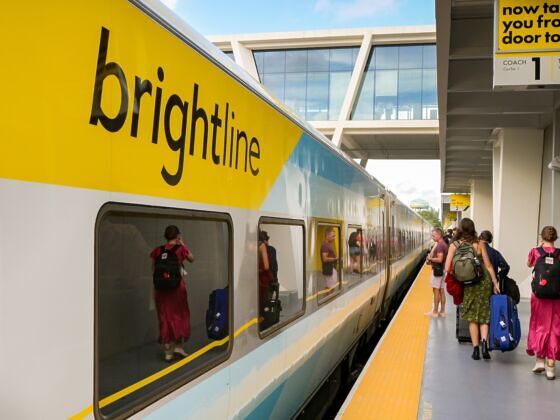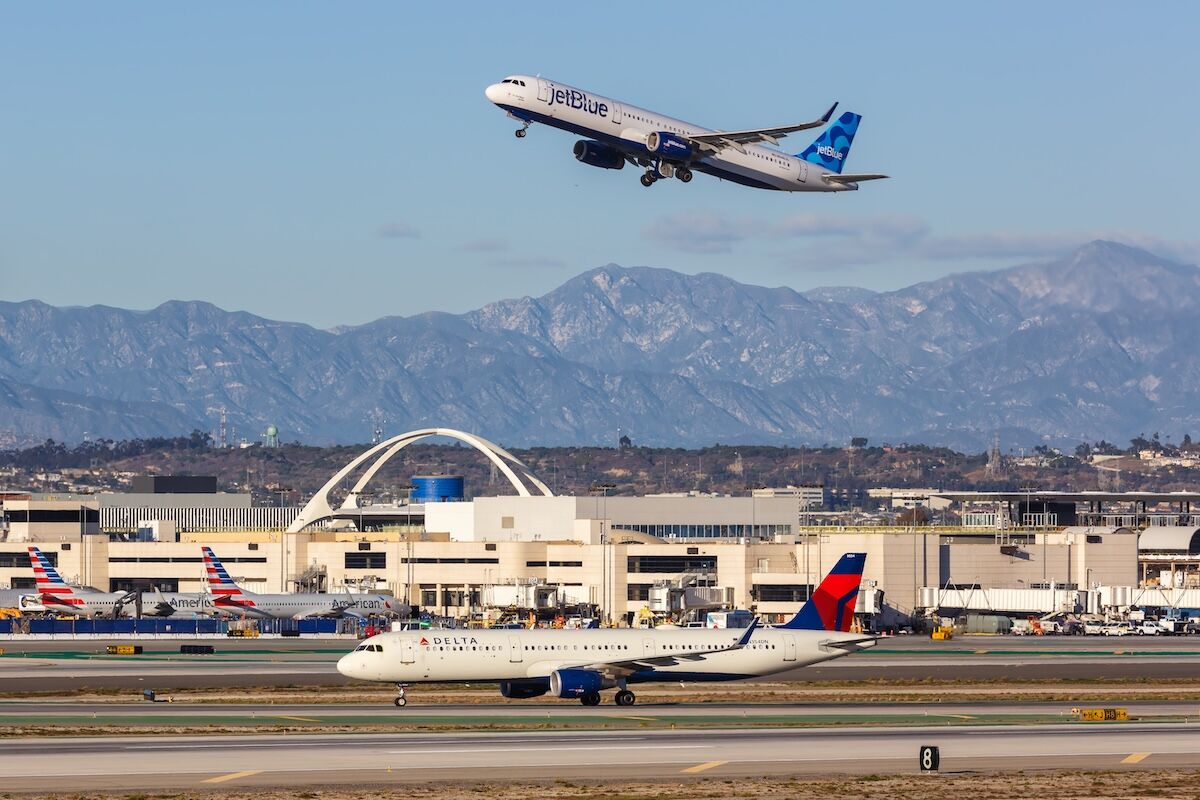Most of the highest-traffic airline routes in the United States either start or end in New York or Los Angeles. All fly between major hub cities, with at least one end of the route being on a coast. None involve Middle America, or anywhere further from a major body of water than Las Vegas. But the most interesting fact about the US Department of Transportation’s report on the 10 busiest airline routes in the United States, isn’t even included in the data – at least three of the routes could soon be taken by high-speed rail. If this comes to pass, it will be possible for travelers to cut their emissions traveling between these cities by between 70 and 80 percent, according to data from the Federal Railroad Administration and Science Direct.


High-Speed Rail Could Soon Cover Several of the Busiest Airline Routes in the United States, Drastically Reducing Emissions
What are the most popular airline routes in the United States?

Photo: Markus Mainka/Shutterstock
As you may suspect, major cities like New York, Los Angeles, and San Francisco appear repeatedly in the list. Interestingly, Atlanta – home to the busiest airport in the world – only shows up once, and the same goes for Chicago. Denver – with the third-busiest airport in the country – doesn’t make the list at all.
- Miami to New York City – 18,809 passengers per day
- Los Angeles to San Francisco – 17,527 passengers per day
- Los Angeles to New York City – 13,856 passengers per day
- New York City to Orlando – 13,302 passengers per day
- Chicago to New York City – 11,036 passengers per day
- Atlanta to New York City – 9,691 passengers per day
- New York City to San Francisco – 9,142 passengers per day
- Los Angeles to Seattle – 7,836 passengers per day
- Las Vegas to Los Angeles – 7,533 passengers per day
- Boston to Washington, DC – 7,193 passengers per day
Where can high-speed rail replace these routes?

Photo: Krtz07 /Shutterstock
According to the High Speed Rail Alliance, the first stretch of high-speed rail infrastructure between San Francisco and Los Angeles is currently underway in the state’s Central Valley, with work currently being done on a 171-mile stretch. The line is expected to open late in this decade to connect the cities in about three hours at 217 miles per hour.
Another in-proress stretch of rail will connect Los Angeles and Las Vegas. Brightline aims to connect Vegas to Rancho Cucomungo, just outside LA, beginning in 2028. The 218-mile trip will take just over two hours including at least one stop along the way, in Victor Valley. Interestingly, the bulk of the route will proceed in the median of the I-15 corridor, so train passengers can watch car travelers crawl along as they whizz by in a more efficient, more enjoyable, and more sustainable manner.
Amtrak’s Acela train connects Boston to Washington, DC, in about 6.5 hours. However, there are talks and ideas about making an even faster train between the two cities. The Northeast Maglev concept plans to connect DC and New York in about an hour, and by adding a Boston leg would connect several major cities along the eastern seaboard, also including Baltimore and Philadelphia in addition to smaller cities like Providence, in just a couple of hours. Maglev technology, which involves levitating trains, is similar to what is used by some bullet trains in Japan and China. Check out the below video from CityNerd: